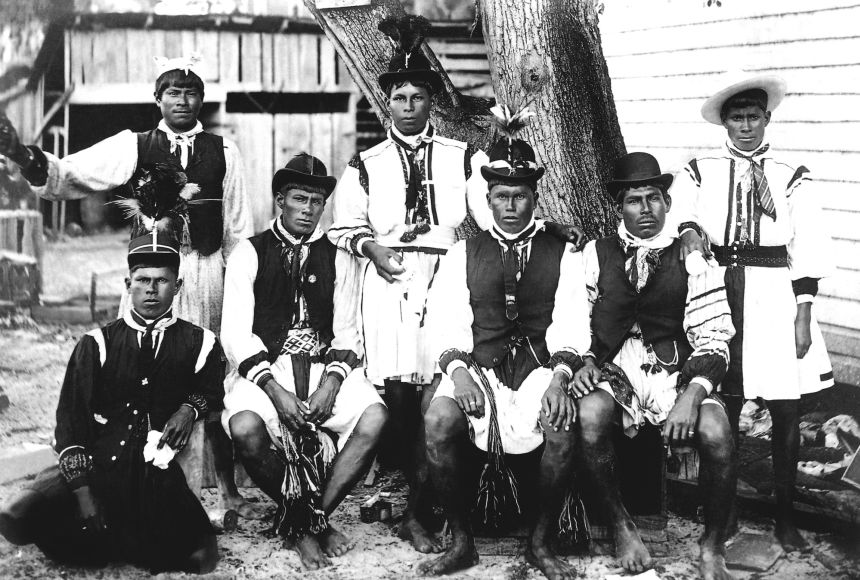ENCYCLOPEDIC ENTRY
ENCYCLOPEDIC ENTRY
Southeast Native American Groups
Southeast Native American Groups
Native Americans called the land of the southeast their home for thousands of years before European colonization. The settlement of the Carolinas brought about a drastic change to their lives.
Grades
5 - 12
Image
Seminole Braves
The Seminole (like this group of Seminole Braves) were among the southeastern nations called the "Five Civilized Tribes" by European settlers. These nations were considered such because of their adoption of European cultural traits.
Photograph by Buyenlarge

Media Credits
The audio, illustrations, photos, and videos are credited beneath the media asset, except for promotional images, which generally link to another page that contains the media credit. The Rights Holder for media is the person or group credited.
Director
Author
Production Managers
Program Specialists
Producer
Intern
other
Last Updated
October 19, 2023
For information on user permissions, please read our Terms of Service. If you have questions about how to cite anything on our website in your project or classroom presentation, please contact your teacher. They will best know the preferred format. When you reach out to them, you will need the page title, URL, and the date you accessed the resource.
Media
If a media asset is downloadable, a download button appears in the corner of the media viewer. If no button appears, you cannot download or save the media.
Text
Text on this page is printable and can be used according to our Terms of Service.
Interactives
Any interactives on this page can only be played while you are visiting our website. You cannot download interactives.